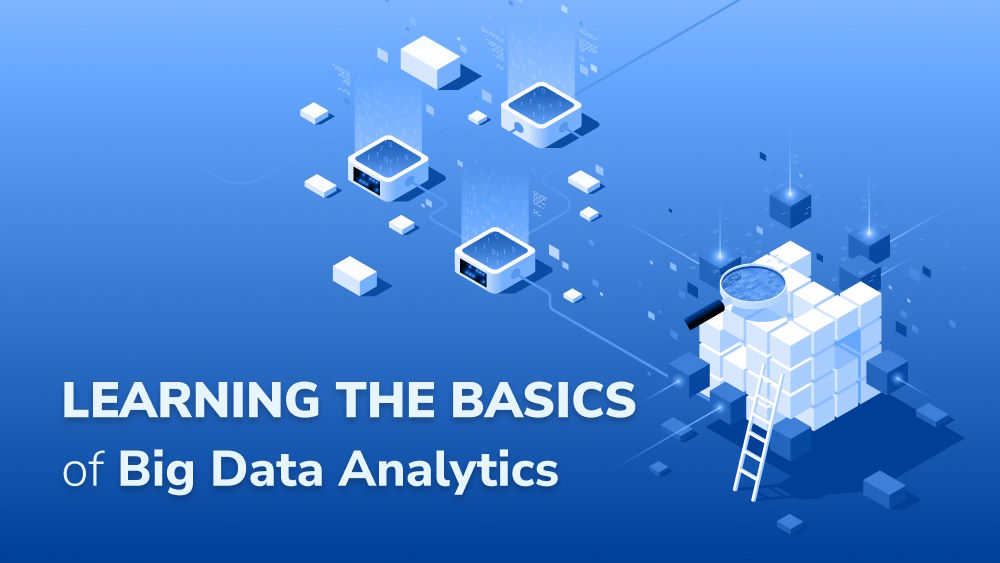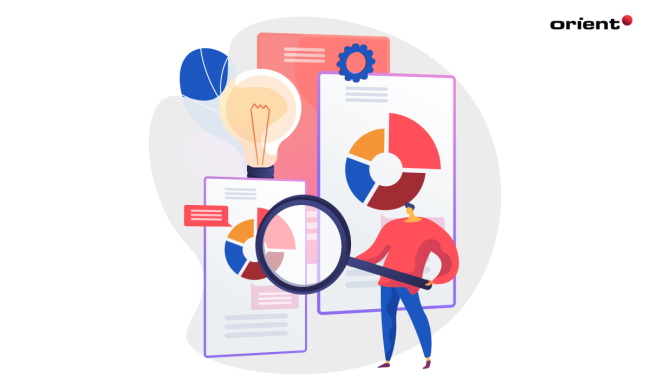Learning the Basics of Big Data Analytics for Cybersecurity

Content Map
More chaptersIn practice, big data analytics and cybersecurity are two very different concepts. Big data analytics is the science of collecting and analyzing raw data, and then presenting that data to stakeholders – in an easy-to-understand way – so that they can make informed decisions. Cybersecurity is the practice of using software tools and technologies to protect computing systems from cyber threats, both outsider and insider threats.
Over time, cyber threats have become more advanced, and so too have the means to protect computing systems from those cyber vulnerabilities. As a result, organizations have embraced big data analytics, with the aim of achieving real-time threat detection, prevention, and elimination.
What is Big Data Analytics to Minimize Cybersecurity Risks?
Big data analytics for cybersecurity involves the use of tools and technologies to protect computing systems from advanced, emerging cyber threats. These analytics tools come in the form of web, mobile, and desktop software applications, which use a variety of techniques, such as machine learning algorithms and automation, to predict the likelihood of cyber attacks and then remediate the issue before causing serious harm or disruption.
When used for cybersecurity purposes, data analytics tools can help streamline the process of finding and stopping, internal and external, cyber threats before they strike. How? Through automation, which can automatically perform a range of tasks, from data collection to data cleaning, with very little if any manual supervision or intervention. In addition, automated data analysis tools work around the clock, protecting organizations day and night, in and out of standard business operating hours, ensuring their computing systems are safe, secure, and well-protected.
How Do Big Data Analytics Tools Improve the Efficiency of a Cybersecurity System?
There are many ways that data analytics can improve the efficiency of a cybersecurity system. One way is its ability to predict and respond to potential threats before they can strike. Different data analysis tools use different methods and techniques to achieve this. Some of the most commonly used elements include Machine Learning (ML) algorithms, statistics, predictive models, and deep learning.
Machine learning systems for identifying hidden patterns
Machine learning is a brand of Artificial Intelligence (AI). It uses big data and algorithms to teach a computing system to learn in the same way a human does. With proper training and programming, machine learning systems develop data models. These data models serve as the basis for which a machine learning system uses as a reference to identify the key signifiers that make up a digital threat.
This enables machine learning systems to identify patterns, trends, and scenarios that strongly indicate the presence of potential threats. Depending on the circumstances, the system will either resolve the issue on its own (and send a report to security analysts for review) or notify the security experts to allow for manual intervention.
EPPs in network devices
Endpoint Protection Platforms (EPPs) are another vital element of big data analytics cybersecurity. EPPs are deployed on endpoint devices (Internet-enabled computer hardware devices such as desktop workstations, laptops, smartphones, and notebooks) to protect against digital threats including ransomware and malware attacks.
Typically cloud-based, EPPs include a wide variety of tools and functions, which can be used to detect and investigate suspicious activity and remediate cyber threats early. EPPs also support continuous data collection and monitoring, with remote access on any Internet-capable device; plus special access permissions, so that only authorized personnel can access and monitor the EPP in line with cybersecurity best practices.
What Other Big Data Analytics Tools Are Used to Safeguard Against Cyber Attacks?
Many other threat intelligence software exists today. Aside from performing real-time threat detection, monitoring, and elimination, such tools can also provide fraud detection, user behavior analytics, event management, and anti-malware protection. Together, these tools can seamlessly protect every possible access point and endpoint in an organization’s computing system. This protection extends to cloud-based accounts, email services, Internet of Things (IoT) devices, and onsite applications.
Across many sectors, fraud is a serious problem. According to PwC’s Global Economic Crime and Fraud Survey 2022, 51 percent of surveyed organizations experienced fraud in the past two years, the highest level in the organization’s two decades of research. The research was based on a survey of 1,296 executives across 53 countries and regions. The survey also revealed that cybercrime was the most prominent source of fraud across multiple sectors, including industrial manufacturing (32 percent), government and public sector (36 percent), health (40 percent), and technology, media, and telecommunications (50 percent).
To combat fraudulent activity, organizations are using powerful and flexible fraud detection tools to detect anomalies and instigate early intervention. For example, they can help identify suspicious employee reimbursement claims, such as double-dipping on fuel or mileage reimbursement claims. They can also identify suspicious keywords that scammers use in emails to imitate reputable organizations, and they can flag suspicious salary increases in payroll systems.
Anti-malware sandboxes are another popular type of big data analytics tool for preventing cybersecurity breaches. These tools create a virtual environment, where one can analyze malicious files and content in a safe, secured, and isolated virtual space – separate from the inner workings of a real computing system. This enables organizations to learn about malicious files, including how they behave and how they get in, so as to better understand their user behavior and then use those findings to devise effective cybersecurity strategies.
What Are the Benefits of Big Data Analytics for Cyber Security?
Threat detection and response
The main benefit of big data analytics for cybersecurity is to detect and respond to digital threats, quickly and effortlessly. These tools provide detailed alerts and reports, outlining the nature and severity of a problem and tips to mitigate future digital threat attempts. And when set up properly, they require minimal manual intervention. They can also identify learned suspicious behaviors as well, such as unusual login attempts, frequent large-volume financial transactions, suspiciously worded emails, and email attachments that contain potentially dangerous content.
Reduce false alarms
In addition, big data analytics for cybersecurity can help reduce false alarms, by recommending solutions – such as changing the behavior of users who continuously trigger the system – that reduce the likelihood of triggering a false positive. For instance, a single failed password attempt should not trigger an alert. It does not account for the fact that some people get their password wrong on the first try. They may simply type in the wrong password or misspell it. Therefore, the system should be reconfigured to only trigger an alert after at least three or more failed password attempts.
Perform cybersecurity analysis
Big data analytics tools can also perform risk analysis. This is an effective way to analyze all of the possible risks that may be present in an organization’s computing system – without waiting for such risks to emerge. The tools can identify possible risks, calculate the potential cost of those risks, and what steps can be taken to reduce or prevent those risks from causing harm. This way, organizations gain a big picture view of the health and status of their computing system, and then respond accordingly to address weak points and improve the system’s digital defence measures.
Find Out if Big Data Analytics for Cyber Security is Right for Your Business
The key to a successful cybersecurity plan is to know when a digital threat may emerge, and then respond accordingly before it can strike. However, knowing which tools and technology to use can be tricky, especially if the nature of the problem – or the solution to a specific problem – is not clear to the organization in the first place.
By talking to cybersecurity teams, they can assess the current cybersecurity measures in place (if any are present), identify areas of concern, and then propose business tools and technology that help remediate those issues. Also, data analytics cybersecurity experts can build custom software that meets unique business requirements, giving organizations a tailor-made solution that provides for focused products, services, and features than off-the-shelf solutions.
Best of all? An initial consultation with cybersecurity analytics experts is free of charge, with no obligation. This way, there is no risk involved. All that is required is a moment of one’s time to discuss plans for a new cybersecurity solution.







